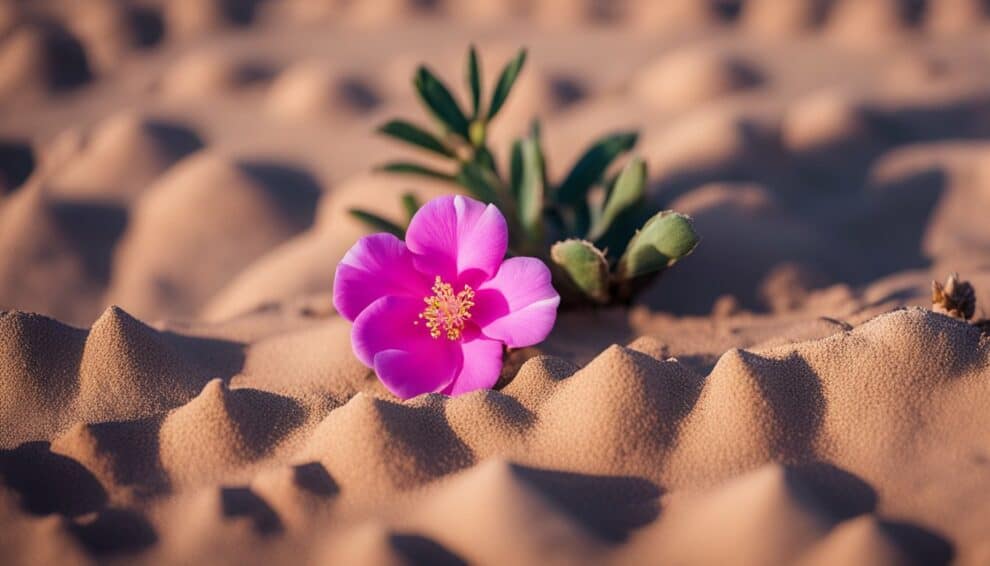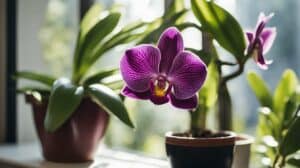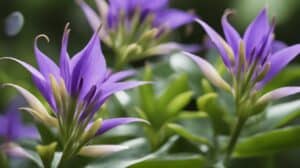Adenium obesum, also known as desert rose, is a stunning succulent plant that is native to the arid regions of Africa and the Arabian Peninsula.
This plant is prized for its striking appearance, with its thick, twisted trunk and beautiful flowers that bloom in a range of colors, from white and pink to deep red.
The desert rose is a member of the Apocynaceae family, which also includes the popular houseplant, the oleander.

Despite its name, the desert rose is not actually a rose at all. However, it is no less beautiful or impressive.
In fact, the desert rose has become increasingly popular among gardeners and plant enthusiasts in recent years, due to its unique appearance and easy care requirements.
With the right care, these plants can thrive in a range of environments, from desert landscapes to indoor spaces, making them a versatile and attractive addition to any collection.
In this article, we will explore the stoic splendor of Adenium obesum and provide tips for caring for these stunning plants.
Understanding Adenium Obesum
Botanical Profile
Adenium obesum, commonly known as Desert Rose, is a succulent plant species that belongs to the Apocynaceae family.
It is characterized by its thick, swollen trunk, which tapers towards the top, and its beautiful, trumpet-shaped flowers that bloom in shades of pink, red, and white.
The leaves of Adenium obesum are glossy and dark green, and they grow in clusters at the tips of the branches.
The plant can grow up to 6 feet tall and 4 feet wide, and it prefers warm, dry climates.
Habitat and Distribution
Adenium obesum is native to the arid regions of Africa, including the Sahel region, the Horn of Africa, and the Arabian Peninsula.
It is commonly found in rocky, sandy soils, and it is well adapted to survive in harsh desert conditions.
Today, Adenium obesum is widely cultivated as an ornamental plant in many parts of the world, including Asia, Europe, and North America.
It is prized for its striking appearance, low maintenance requirements, and ability to thrive in hot, dry climates.
Overall, Adenium obesum is a fascinating plant species that is well worth exploring for anyone interested in succulents or desert flora.
Its unique appearance, hardy nature, and stunning flowers make it a true gem of the plant world.
Cultivation Techniques

Propagation Methods
Adenium obesum can be propagated through a variety of methods, including seeds, cuttings, and grafting.
Seeds are the easiest method, but it takes several years for the plant to mature.
Cuttings can be taken from the stem or root, and should be allowed to dry for a few days before being planted in well-draining soil.
Grafting is a more advanced technique that involves joining two plants together to create a stronger specimen.
Ideal Growing Conditions
Adenium obesum thrives in warm, dry conditions and requires at least six hours of direct sunlight per day.
The plant prefers well-draining soil and should be watered sparingly, allowing the soil to dry out between waterings.
Fertilizer should be applied sparingly, as the plant is sensitive to overfeeding.
Pest and Disease Management
Adenium obesum is susceptible to a variety of pests and diseases, including spider mites, mealybugs, and root rot.
Regular inspection of the plant can help prevent infestations, and insecticidal soap can be used to control pests.
To prevent root rot, the plant should be grown in well-draining soil and watered sparingly.
Aesthetic and Cultural Significance

Symbolism and Folklore
Adenium obesum, commonly known as the Desert Rose, is a plant that has been revered for its beauty and symbolism in various cultures.
In ancient Egyptian mythology, it was believed that the plant had healing powers and was associated with the goddess Isis.
The plant was also believed to be a symbol of love and fertility.
In some African cultures, the Desert Rose is believed to protect against evil spirits and is often used in rituals and ceremonies.
It is also believed to bring good luck and prosperity to those who possess it.
Ornamental Uses
Apart from its cultural significance, the Desert Rose is also a popular ornamental plant.
Its striking, colorful blooms and unique trunk shape make it a favorite among gardeners and collectors alike.
The plant is often used in landscaping and can be grown in pots or as bonsai trees.
The Desert Rose is also a popular houseplant and can be grown indoors with proper care.
Its low maintenance requirements and ability to thrive in hot, dry environments make it an ideal choice for those who live in arid regions.
Overall, the Desert Rose is a plant that is both aesthetically pleasing and culturally significant.
Its unique beauty and symbolism have made it a beloved plant in many cultures around the world.
Frequently Asked Questions

How do I properly care for a Desert Rose plant?
Desert Rose plants require well-drained soil, plenty of sunlight, and warm temperatures to thrive.
It’s important to avoid overwatering, as this can lead to root rot. Allow the soil to dry out between waterings, and be sure to provide adequate drainage.
Fertilize your plant regularly during the growing season, and prune as needed to encourage healthy growth.
What are the ideal growing conditions for Adenium Obesum?
Desert Rose plants prefer warm, sunny environments with temperatures between 65 and 85 degrees Fahrenheit.
They require well-drained soil and should be watered sparingly, allowing the soil to dry out between waterings.
Fertilize regularly during the growing season, and provide additional light if necessary.
Can you provide tips for encouraging bloom in Desert Rose plants?
To encourage blooming in Desert Rose plants, it’s important to provide them with plenty of light and warmth.
Fertilize regularly with a high-phosphorus fertilizer, and prune as needed to promote healthy growth.
Be patient, as it can take several years for a Desert Rose plant to reach maturity and produce blooms.
What are common issues to watch out for when growing a Desert Rose?
Common issues when growing Desert Rose plants include root rot, fungal infections, and pest infestations.
To prevent these problems, be sure to provide adequate drainage and avoid overwatering.
Keep an eye out for signs of disease or pest damage, and treat promptly if necessary.
How often should I water my Desert Rose to keep it healthy?
Desert Rose plants should be watered sparingly, allowing the soil to dry out between waterings.
In general, it’s best to water once a week during the growing season, and even less frequently during the dormant season.
Be sure to provide adequate drainage to prevent root rot.
What is the best way to propagate a Desert Rose?
Desert Rose plants can be propagated from stem cuttings or by grafting.
To propagate from stem cuttings, simply take a cutting from a healthy plant and allow it to dry out for a few days.
Then, plant the cutting in well-drained soil and water sparingly.
Grafting is a more advanced technique that involves joining two plants together to create a new hybrid.














